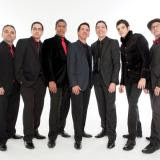This is turning out to be a very fun week in the Orchestra.
We started the week with 2 educational concerts with an animal theme. The program included "Carnival of the Animals" and other music descriptive of animal sounds. We played Leroy Anderson's "The Waltzing Cat", Arthur Pryor's "The Whistler and His Dog" and Paul White's "Mosquito Dance".
In the "Mosquito Dance", the bassoon plays about 10 notes. It certainly plays the largest mosquito in the orchestra as all of the other sounds are very high and squeaky sounding.
The weekend concert is a performance of Charlie Chaplin's score for his movie, "City Lights" with the film projected on a screen over us. More about this later.
The job of an Assistant (or Associate) Principal player in an orchestra involves playing many different roles. Often, the Principal player only plays a small repertoire of the 40-50 major works of the classical repertoire.
My role involves playing many of these, too, but also includes such novelties as the Chaplin film score, any contemporary piece that is programmed, some pops and often a concerto or overture when programmed, as well as any 3rd bassoon parts in the larger scores of Strauss, Mahler, etc.
There are two ways of looking at this job. One is to be envious of the Principal player, who gets much of the glory for playing the major solos (but also a lot of pressure!) and the other is to enjoy the diversity and novelty of the many different assignments.
I admit sometimes it's hard to avoid the first attitude, but when I really think about it, playing the contemporary works challenges me to keep my technique sharp and collaborating with a soloist in a concerto keeps my chamber music skills honed. I also really enjoy the 3rd bassoon parts. It's hard to get stale under the circumstances!
It's also good to remind myself from time to time, how fortunate I am to have such a great job. It took me 20 years of auditioning to reach this position and I try not to forget the struggle that younger players go through trying to establish themselves.
The assistant role differs from orchestra to orchestra. Here in Cleveland we don't play that many pops concerts (although we're doing more than we used to), so that part of the job isn't as dominating as it is in other orchestras, for instance.
This Saturday evening we perform "City Lights" with the film. Chaplin wrote his own music for this movie! The guy was a complete genius! Does anyone know if he orchestrated it, too? I'll certainly ask our conductor.
The score is very lively and full of 20's style jazz, sentimental tunes and some Puccini-like melodies. There are lots of bassoon solos. One is a drunken duet with the trumpet, another that recurs many times is a jaunty staccato tune that is cliché bassoon writing.
The movie itself is one of the greatest ever made -- silent or sound era -- The ending is extremely poignant. My 17-year old daughter, Maddy and I watched it a few months ago. I was impressed by how this 81 year-old film completely won over my daughter (who is devoted to social media and multi-tasking). My wife and she will come to our performance on Saturday.
Anyone local interested in seeing it can purchase and print (!) tickets online at the Cleveland Orchestra website.
















